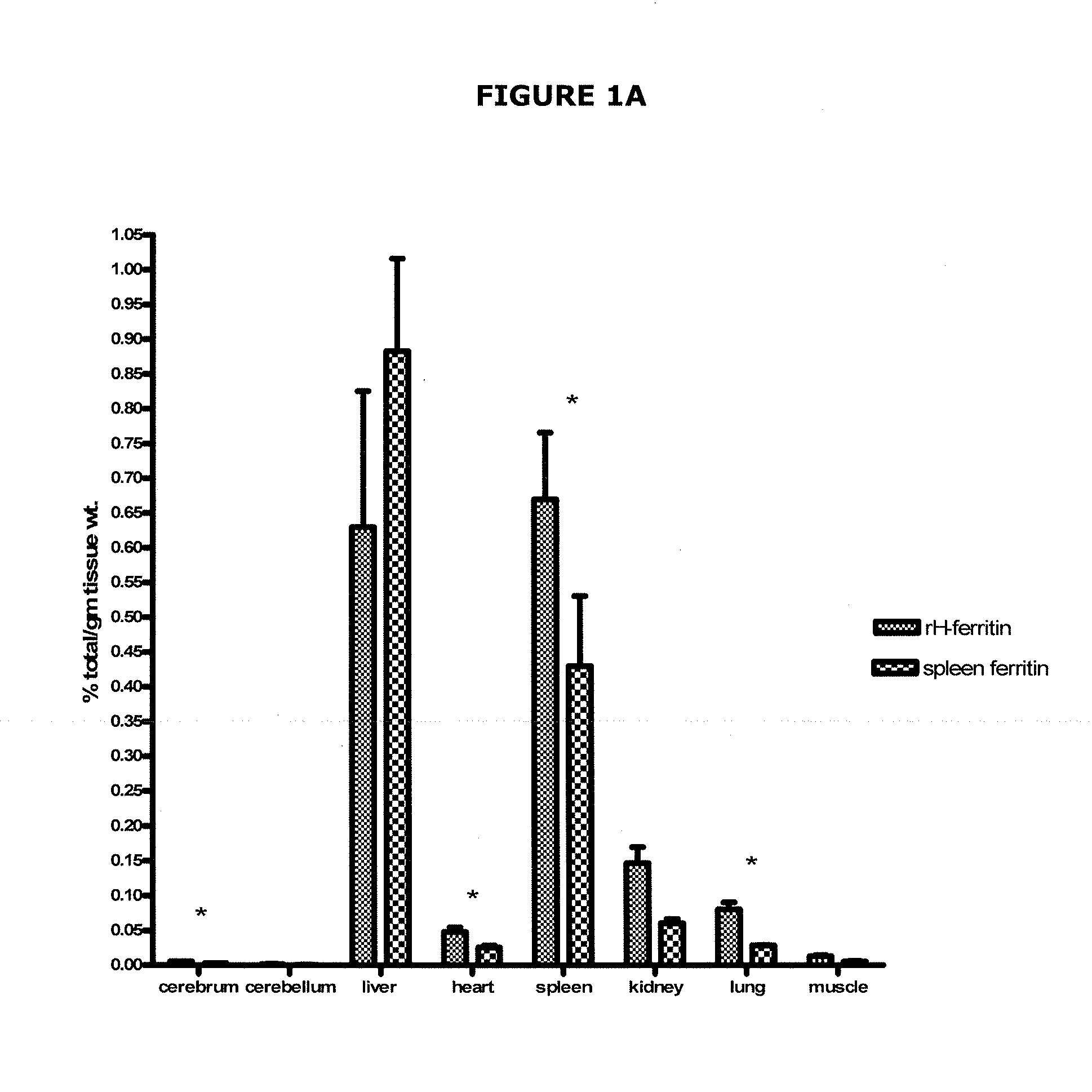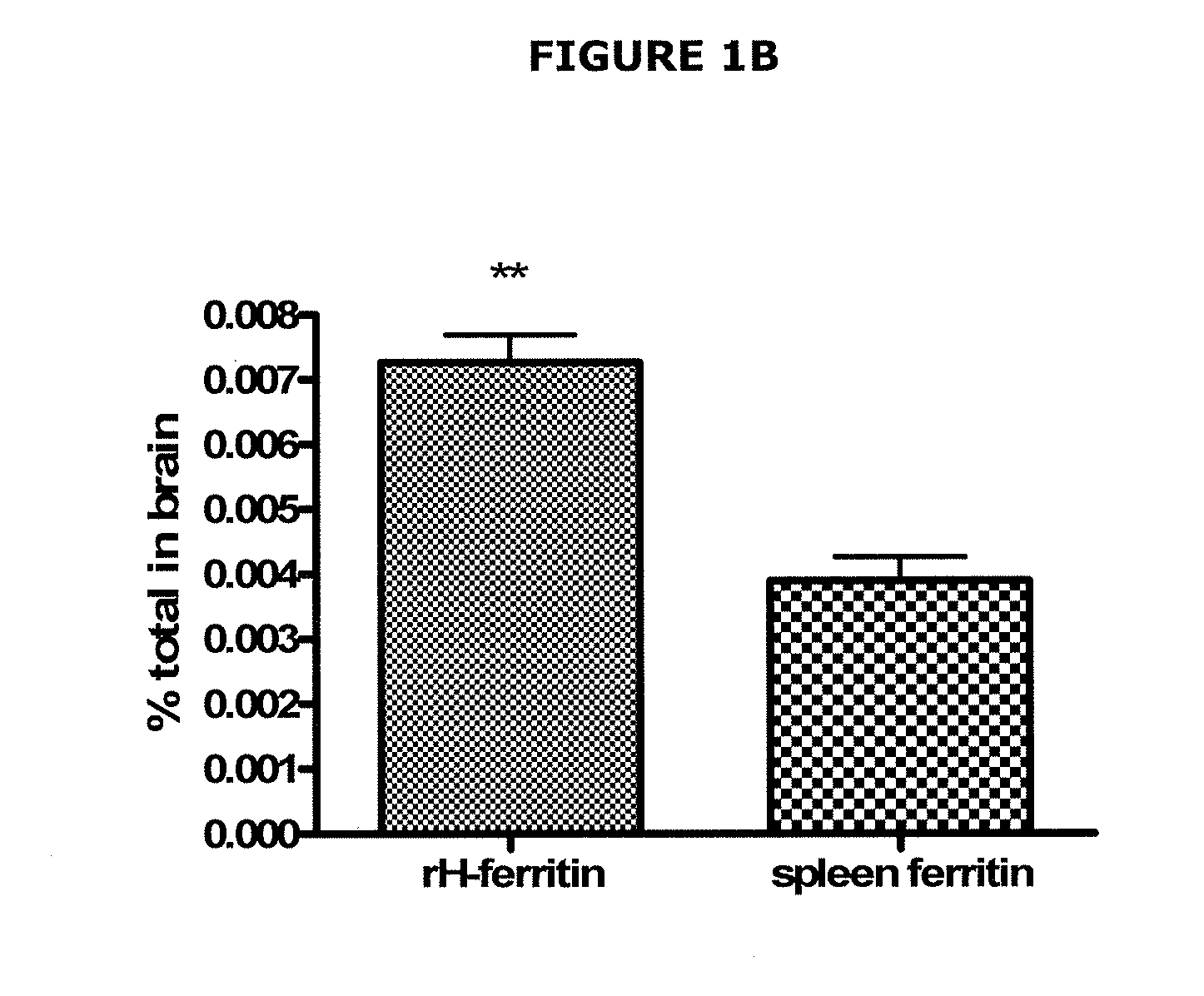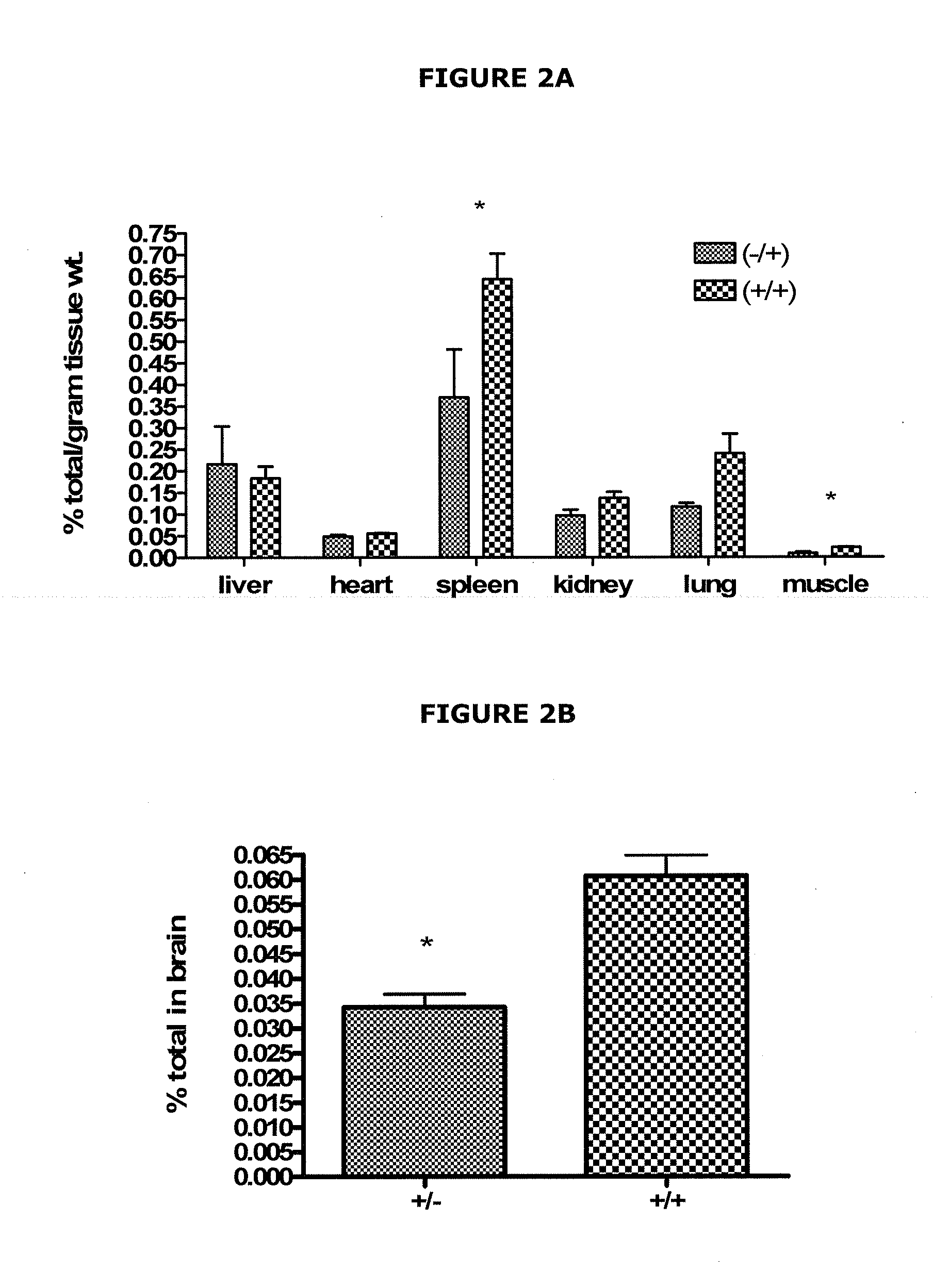Use of ferritin to treat iron disorders
a technology of ferritin and iron, applied in the field of ferritin to treat iron disorders, can solve the problems of high dose of iron, limited efficacy of dietary iron supplements, mental disorders and severe motor impairments that can persist,
- Summary
- Abstract
- Description
- Claims
- Application Information
AI Technical Summary
Benefits of technology
Problems solved by technology
Method used
Image
Examples
example 1
Ferritin Uptake and Transport
Methods
[0073]Ferritin Preparation
[0074]All the experiments in this example used recombinant human H-ferritin or horse spleen ferritin. The recombinant human H-ferritin was prepared by transforming chemically competent Br21 cells with a recombinant human H-ferritin plasmid. After the cells were grown, the protein was purified with a nickel protein filter column to a final concentration of 2.8 mg / ml. The horse spleen ferritin was obtained commercially (Sigma), and was chosen because it contains about 90:10 L- to H-ferritin subunits.
[0075]Cell Culture and Preparation of Endothelial Cell Monolayer
[0076]We used bovine retinal endothelial cells (BRECs) as an in vitro model of the blood-brain barrier (BBB) to test the hypothesis that ferritin can be transported across a layer of endothelial cells and to begin to address the mechanism of ferritin transport across the BBB. This well studied model has been shown to posses all of the necessary characteristics and a...
example 2
Dietary Delivery of H-Ferritin
[0109]We have devised a mechanism for delivering rH-ferritin as a dietary supplement using recombinant yeast in which the H-ferritin gene is integrated into the yeast genome. Initially, yeast was transformed to express the human H-ferritin gene, which can be translated into the H-ferritin protein. The immunoblot shown in FIG. 7 demonstrates that rH-ferritin protein is produced by the yeast and that the H-ferritin antibody does not cross-react with L-ferritin. A study was performed on the effects of iron concentration in the culture medium on the iron content of rH-ferritin in the transformed yeast. Yeast were grown in YEPD medium containing standard amounts of iron and in iron-supplemented medium (YEPD plus 6 mM FeSO4). The results are shown in FIG. 8. Recombinant yeast for the sample in lane 3 of FIG. 8 were grown in an iron-rich medium, whereas yeast for the sample in lane 4 were grown under standard iron conditions. Ferritin from yeast grown in an ir...
PUM
| Property | Measurement | Unit |
|---|---|---|
| molecular weight | aaaaa | aaaaa |
| molecular weight | aaaaa | aaaaa |
| weight | aaaaa | aaaaa |
Abstract
Description
Claims
Application Information
 Login to View More
Login to View More - R&D
- Intellectual Property
- Life Sciences
- Materials
- Tech Scout
- Unparalleled Data Quality
- Higher Quality Content
- 60% Fewer Hallucinations
Browse by: Latest US Patents, China's latest patents, Technical Efficacy Thesaurus, Application Domain, Technology Topic, Popular Technical Reports.
© 2025 PatSnap. All rights reserved.Legal|Privacy policy|Modern Slavery Act Transparency Statement|Sitemap|About US| Contact US: help@patsnap.com



